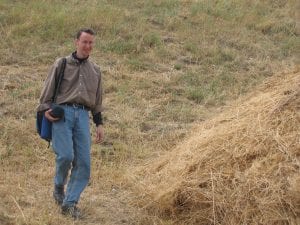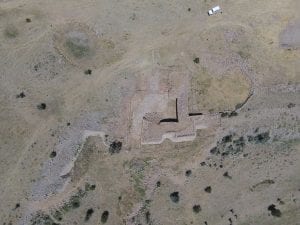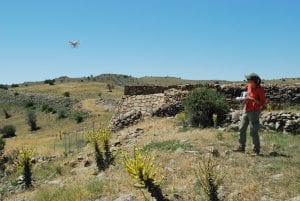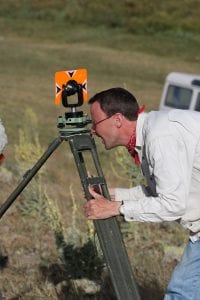Get Plugged in with Anthropology Professor Branting

On Jan. 28, Assistant professor of anthropology, Scott Branting, Ph.D., participated in a Future Tense discussion about how present and emerging technologies can be used to deliver cultural heritage from the past to the future. After the event, Increasing Human Potential asked Dr. Branting for a follow-up interview for their “Unmanned Unplugged” feature.
Increasing Human Potential is a website produced by the Association for Unmanned Vehicle Systems International (AUVSI). “Unmanned Unplugged” is a feature at Increasing Human Potential that brings you stories about the innovative ways unmanned systems are being used today directly from the people putting this technology to use.
Dr. Branting’s feature focused on his research and excavation of the Kerkenes Dağ site. They asked him a few questions about the pre-Hellenic site, the systems he has been using and the overall importance of his research.
What is the importance of the Kerkenes Dağ site?

DJI Phantom 2 Vision Plus photo of city gate at Kerkenes.
There are two major ways in which it is important. First, there is an historical importance to the site as an enormous ancient city that was instrumental in the rise of Cyrus the Great, the first Persian emperor, and in the last presence of the Phrygian kingdom as well.
On a second level though, it’s a very unique archeological site that was basically built on a location where we don’t have any evidence that there had previously been a city laid out. It was planned, built and inhabited for about 40 to 60 years before it was destroyed and then not re-inhabited.
You can get an idea as to the aspects of city planning that went into the site and then see how it was actually used for a brief period of time.
You’ve been using some unmanned aircraft. How long have you been doing that?
We’ve been doing that since 2012 in terms of remote-controlled drones. However, even in 1993 and 1994 tethered balloons were used with cameras to take photographs of the site. We also used manned systems, such as a hot air balloon flight over the city and aerial photographs.

Susan Penacho flying a drone over Kerkenes city wall.
What systems are you using and how do they help you in your work?
We started with a Parrot drone in 2012, and then we moved onto DJI Phantoms 2s and 3s over the last couple of years.
The unmanned vehicles are able to provide an overhead perspective in terms of photography. We can also bring the image in and, using a total station or GPS, we can rectify the photographs and digitize off that a stone-by-stone plan.
The other thing we can do is incorporate some of the new photogrammetric techniques to generate 3-D point clouds from the overhead photographs and photographs we take on the ground. With that we can do fairly precise monitoring of standing architecture.
What other sorts of technology have proven useful for your work?
We’ve used a lot of ground-based geophysical sensing devices, things like electrical resistance meters, magnetic gradiometers. We’ve also use GPS equipment since a couple years after GPS was first made available. We’ve used all of these technologies to help us map out large portions of the buried city without having to excavate everywhere.
More recently, we’ve gotten into 3-D scanners, but some of the work that we’re now doing with the photogrammetry is replace parts of that 3-D scanning work, in large part because of the time involved in terms of the collection of the data in the field.

Dr. Branting setting up backsite prism.
How much longer do you think it will take to completely excavate it and understand the area?
To completely excavate the city would take an enormous amount of time. We’re hoping to use these technologies to dig smarter and therefore to be able to answer questions without having to completely excavate everything. That also will allow future archeologists to come back and work at the site to answer new questions using new technologies or new methods.
As for myself, I hope to be there for the next 25 or so years and then pass it on to other archeologists to continue the work.
Later this month, Dr. Branting’s interview will be published in Unmanned Systems, a monthly magazine published by Increasing Human Potential.
To view the original interview click here.
To learn more about Increasing Human Potential and unmanned systems click here.
